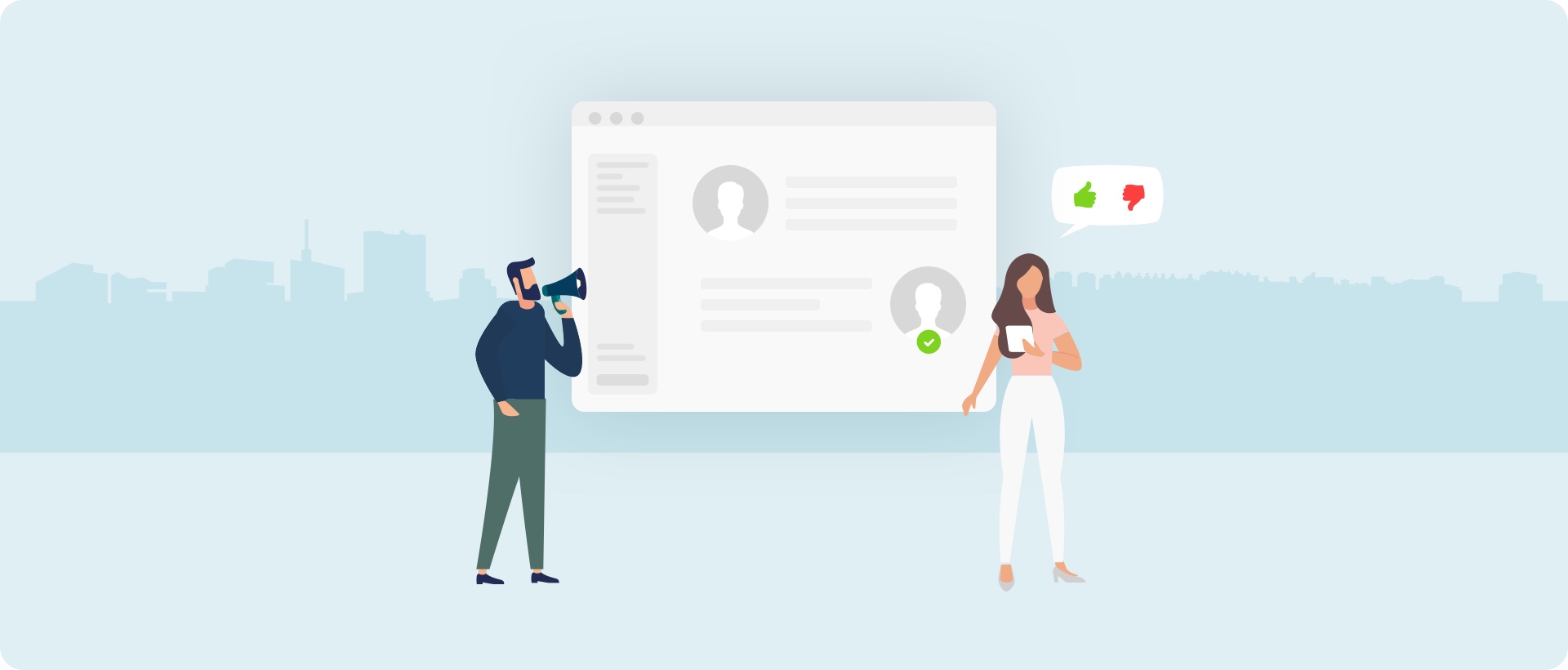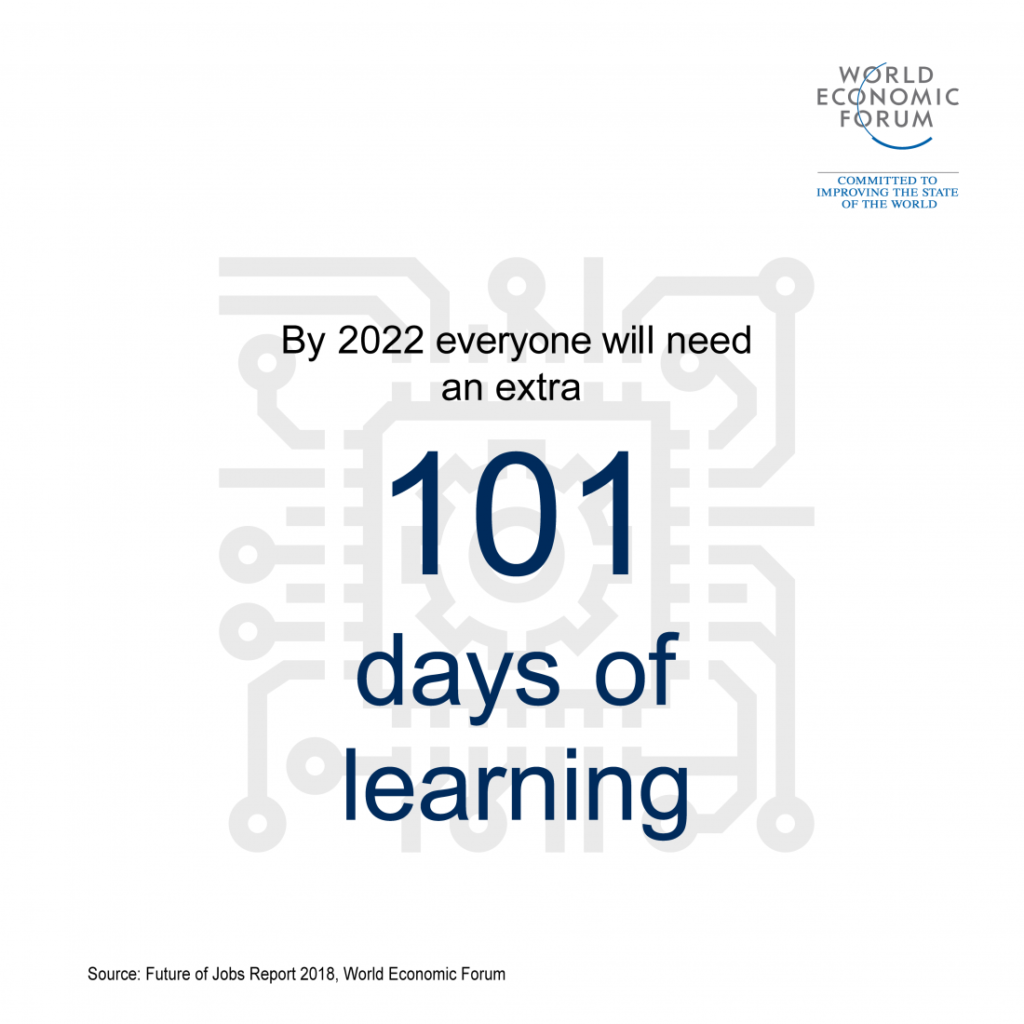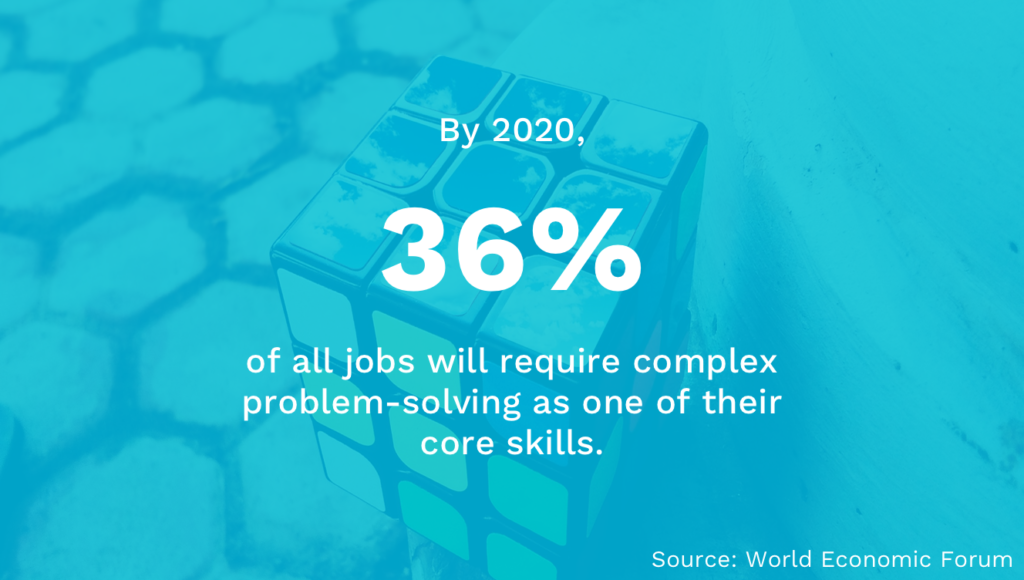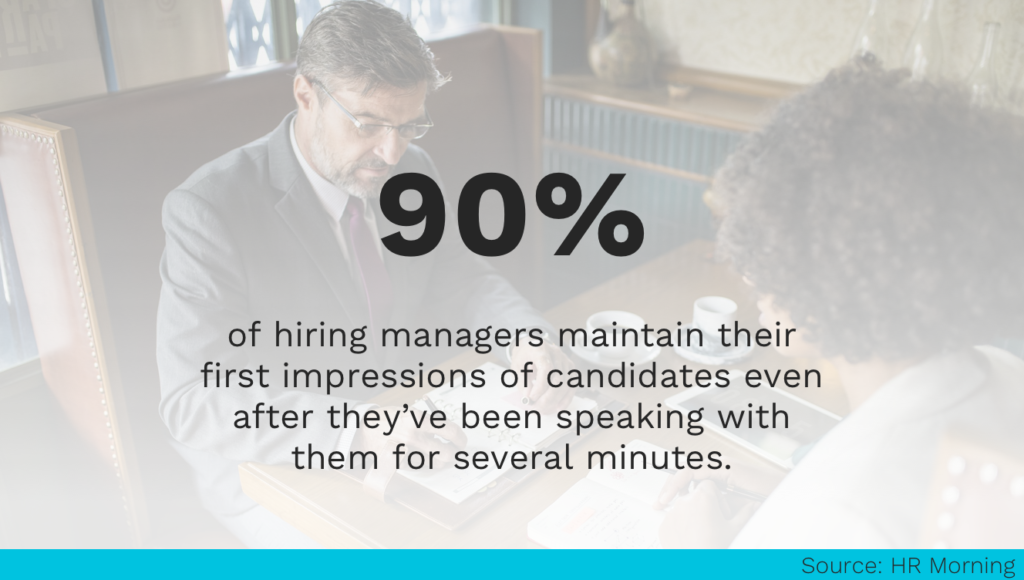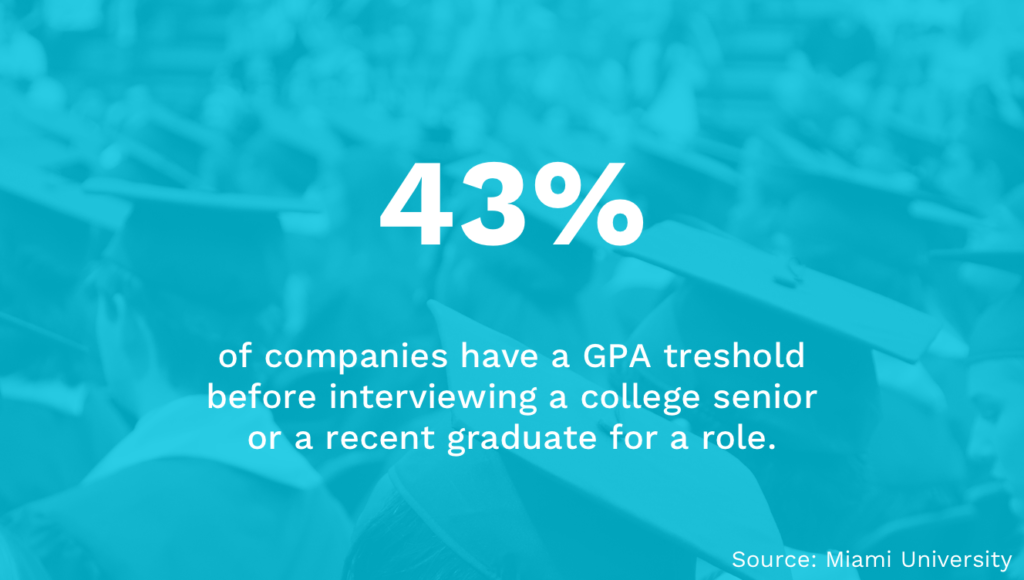As a recruiter, it’s your responsibility to determine if a candidate would be successful in your open position. But when you’re faced with a stack of resumes and a calendar packed with interviews, it’s easy to feel unsure of what exactly you’re looking for.
Key predictors of job performance will vary from role to role. Every job family will have a unique set of skills or characteristics that you’ll need to look out for. The predictors of a great customer service agent may not be the same as those for a restaurant employee or business development representative.
However, there are some job performance predictors that apply across various roles and industries. Here are some of the biggest to look out for in your candidates.
What’s in?
Let’s dive in!
Like what you see?
Don’t miss out. Subscribe to our quarterly digest to get the latest TA and TM resources delivered right to your inbox.
Characteristics that predict great job performance
If you’re looking to hire a new individual, regardless of experience level or industry, keep your eye out for the following six predictors of great job performance.
1. Cognitive ability
Cognitive ability, or general mental ability, defines how well a person is able to perform a wide range of mental processes, including solving problems, reading, working with numbers, remembering things, organizing, and planning.
Knowing a candidate’s cognitive ability is important for jobs at every level in all kinds of industries. It can predict how well a candidate will pick up on the training materials, how they will understand instructions, how efficiently they’ll be able to solve problems throughout the workday, and how easily communication will come to them.
You can check the cognitive ability level of your candidates by an online test. For entry-level employees, results of a quick test may be able to predict job success. However, if you’re hiring for a management role or another higher-level position, you may want to consider a more in-depth test.
A gamified cognitive ability test is fun for the candidates as well as informative for the employer.
See cognitive ability testing in action.
Learn what makes cognitive ability testing the biggest predictor of job success.
2. Conscientiousness
When a candidate is conscientious, they want to do their work well and thoroughly the first time around. They care about getting things right and they’ll put in the effort to ensure everything is accurate and done to their best ability. They meet deadlines, plan ahead, and act responsibly.
While people can learn how to be better planners or refine their organization skills, conscientiousness should be a characteristic you look for in new candidates for any role. At least having an understanding and desire to do their work well will make it easier to train new hires to meet deadlines and always put their best foot forward.
You can measure conscientiousness through a personality questionnaire, such as a HEXACO test. A HEXACO personality inventory evaluates six major dimensions of personality, including honesty-humility, emotionality, extraversion, agreeableness, conscientiousness, and openness to experience.
3. Growth mindset
Some people are natural learners. When candidates have a growth mindset, they are always willing to learn something new and want to make an effort to be better. They’re interested in learning new skills, advancing in their career, and growing both personally and professionally. In short, people with growth mindset believe that they can develop themselves through hard work and embracing feedback.
Employees are more successful when they’re invested in their careers and development. When they want to do better at their job and advance, they’ll be more likely to take on additional tasks and challenges that can make them stronger in their positions and more qualified to advance to a higher role.
A candidate’s growth mindset can be measured through interview questions and looking at past performance. For example, you can ask them about a professional failure they’ve experienced and look out for an answer describing not only the failure itself, but also what the candidate learned from it.
Other predictors might include what the candidate does outside of their current position, such as volunteer work or side hustles, or additional certifications or testing.
The need for re- and upskilling will become even more prominent in the years to follow. That’s why growth mindset and active learning are key predictors of job performance.
4. Active learning
Active learning skills mean candidates are engaged beyond just active listening. They’re able to apply the information they’re learning to real-life activities or scenarios. According to the World Economic Forum, active learning is among the top innovation skills of the future.
A candidate with great active learning skills will be more successful in their role because they will be able to retrain or learn new processes and systems with ease. Not only is this great for candidates who want to advance in their career, but it also makes it easier to stay up-to-date with changing technological landscapes and business needs.
Just like a growth mindset, the best way to measure active learning skills is through interview questions and past performance. For example, you can ask them about something they have learned on the job and then applied to future tasks and experiences. Also, consider the other learning environments they’ve engaged in, as well as the roles they’ve held in the past.
5. Creative problem-solving
There are a number of problems that can pop up on the job. Some of them may be issues the individual has never had to deal with before. Having the ability to creatively solve problems, or, so to say, to solve complex problems in a creative way, can make a potential candidate more efficient in their positions.
When an individual is able to think beyond the way they’ve been trained, they have more confidence in resolving issues to get tasks done. Not only does this increase productivity, but it also helps employees learn how to advance their problem-solving skills and think outside the box.
To test a candidate’s creative problem-solving, you can use sample tests or scenario assessments. Ask applicants to respond to an issue or problem they may not have been trained on and measure how they approach the challenge. You can also ask about past performance and gather real-life examples.
…and for other jobs, it will still remain an important skill.
6. Track record of past performance
An interview or assessments aren’t always enough to get an indication of how well a candidate will perform in a job. It’s also important to look at their past performance and identify track records of success, regardless of the level position you’re hiring for.
While more experienced candidates may have more of a track record to discuss, look for indicators of success in entry-level candidates as well. However, this may need to be through untraditional routes, such as internships, clubs, volunteer work or part-time jobs.
It’s important to consider other types of complex work and what kind of track record the candidate has. Even if they don’t have a lot of experience with certain tasks, having a strong track record in other complex areas could mean their skills can translate.
What isn’t a predictor of job success?
Recruiters often rely on feelings, characteristics, or opinions that aren’t great predictors of job success. Here are four things you should avoid basing your hiring decisions on.
1. First impressions
About one-third of bosses claim they know in the first 90 seconds of an interview whether or not they will hire someone. While first impressions are important, they definitely aren’t strong enough to base a hiring decision off of.
When you allow a first impression to cloud your judgment, you’re preventing yourself from truly getting to know a candidate and what they’re capable of. An overly-positive first impression could result in hiring a person who isn’t qualified, while an overly-negative first impression could prevent you from giving a strong candidate a fair chance.
As a recruiter or hiring manager, it’s important to remove first impression thoughts from the hiring process. Keep your mind open to all candidates and give each individual a fair chance.
First impression plays a big role in decision-making in hiring, despite it being not predictive for job success.
2. Trick questions
Google used to be infamous for giving candidates brain teasers during the interview process. They mainly wanted to see what applicants’ thought process was and if they were able to come up with a quick and clever response. However, these kinds of trick questions can put pressure on the candidate, causing them to underperform.
Employees also don’t experience questions like these on the job, meaning they’re not a great way to determine a candidate’s job success. An applicant may be able to answer brain teasers and trick questions but unable to perform relevant tasks. Google also realized that brain teasers do not predict job success and scrapped them from the interview process.
Rather than using brainteasers or questions that are meant to be difficult to answer, ask employees about things relevant to the job opening. Assess their skills related to the everyday tasks they’ll be performing and challenge them in ways that might traditionally appear on the job.
3. Affinity bias
It’s easy to feel connected to a candidate you have personal commonalities with. When you share interests, went to the same school, or have other things in common, you can feel a natural affinity towards them. However, this doesn’t mean they’ll be successful in your open position.
When assessing a candidate, it’s important to remove your personal preference from the equation. While you may want to see a certain individual on the team, you need to evaluate whether or not that is the right person for the job. If a candidate is better suited for the role––even if you have less in common––you need to make the right hire.
To further eliminate the possibility of affinity bias, you should weigh the opinions of various stakeholders evenly. Get multiple opinions about a candidate and hire based on who everyone believes best fits the role––even if that’s not your selection.
4. School grades
How a candidate performed in college can be a good way of assessing certain skills if they’ve just graduated and they don’t have a lot of other experience to base your opinion on. However, candidates can mature and grow professionally quite quickly after graduation.
If you’re still looking at school grades to make a hiring decision years after a candidate has left school, you’re probably overlooking some great employees. Looking only at GPA can also make it difficult to evaluate how challenging a candidate’s education was. A lower GPA at a stronger school might be more reflective of a hard-worker than a perfect GPA at a less challenging institution.
“Let’s say the chances of making a good hire if you just choose randomly from a pool of applicants randomly are 50% – one out of two. If you instead consider applicant GPA only, your chances of hiring a solid performer go up by about 4 percent, to 52%,” explains Mike Russiello from HR Avatar based on a study by psychology professors John Hunter and Frank Schmidt.
Instead of looking at GPA, focus on previous experience or skills directly related to the role you’re trying to fill. Look at characteristics beyond just performing well in class, even if candidates are straight out of school. Consider things like club participation, leadership roles, or internships as well.
This number goes up to 63% among large employers of 10,000+ employees. GPA is the first or second most important factor when reviewing an applicant for 25% of companies.
Conclusion
Each role you’re hiring for will have some unique skills and characteristics that signify a strong performer, and it’s important to know what those are. However, it’s also important to identify the key predictors of hard workers, top performers, and great employees.
This list is just a place to get started. To further refine the predictors of job performance for your specific organization, take a look at who is performing well in your company. What skills or characteristics do they have in common?
Use your list as a benchmark for future hires. While your candidate doesn’t need to have each and every characteristic on your list, it can decrease your risk of making bad hires.
Stop guessing,
Start data-driven hiring.
Learn how you implement a modern candidate selection process, that is: streamlined, experience-driven and backed by data.

